CHRONOLOGY
![]()
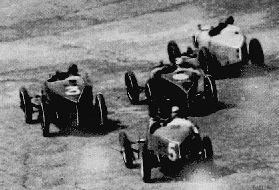 One hundred and twenty years of Diatto history, from 1835, when Guglielmo
Diatto (son of Biagio), started a wheelwright’s business on the banks of the river Po, in Turin, until 1955, when
the company was taken over by Veglio & C. SpA. Over a century of intense work, with ups and downs, making a fundamental
contribution to the history of motor racing. This page meticulously sets out the events which shaped the family’s
decisions and the history of the automobile manufacturer, giving the reader an overall picture of the period and
the business.
One hundred and twenty years of Diatto history, from 1835, when Guglielmo
Diatto (son of Biagio), started a wheelwright’s business on the banks of the river Po, in Turin, until 1955, when
the company was taken over by Veglio & C. SpA. Over a century of intense work, with ups and downs, making a fundamental
contribution to the history of motor racing. This page meticulously sets out the events which shaped the family’s
decisions and the history of the automobile manufacturer, giving the reader an overall picture of the period and
the business.
CHRONOLOGY OF COMPANY |
1814
10 June: death of Biagio Diatto in Carmagnola.
1835
Guglielmo Diatto, Biagio’s son, opens a wheel-wrights workshop on the banks of
the river Po, Turin, leasing the land from Count Francesco Gay.
1861
5 May: Guglielmo Diatto buys the land from Count Gay and extends the
laboratory, to a design by Architect
Giuseppe Brocchi.
1862
8 October: further extensions based on plans drawn up by Saverio Avenati
(Engineer).
 1863
1863
Further extensions based on plans by Architect Luigi Formento.
1864
16 October: death of Guglielmo Diatto. The business passes to his sons, Vincenzo,
Giovanni, Giovanni Battista and Pietro, with shares going to the widow, Anna, and daughters
Teresa, Angela, Giuseppa and Rosa.
1865
The new company, Guglielmo Diatto Eredi, (heirs of Guglielmo Diatto) enlarges
the manufacturing facilities. The plans are by Luigi Formento.
1867
31 January: the female side of the family makes over shares to the male heirs.
1868
1st September: the company takes the name Fratelli Diatto and further enlarges
the premises to plans drawn up by Architect Giuseppe Brocchi.
1874
12 November: Diatto Brothers builds new production facilities.
1875
17 February: a new factory wing is built to plans by Architect Luigi Formento.
1878
9 May: the Priest Giuseppe Delfino sells a house, garden and meadow to Fratelli
Diatto (Diatto Brothers) for
Itl 20,000. 23 October: Leone Bauquel sells land and a newly built house to
Giovanni, Giovanni Battista and Pietro Diatto for Itl 9,500. The property is close to Borgo di Po.
1879
16 May: Carlo Marinetti and his wife Lucia Cerutti sell a strip of land on the
banks of the
1880
10 August: death of Vincenzo Diatto, unmarried. He leaves his part of the
company to his mother, brothers and sisters.
1881
Carlo and Lucia Marinetti sell a strip of land in Borgo di Po to the brothers
Giovanni, Giovanni Battista and Pietro Diatto.
 1882
1882
22 May: the Priest Giuseppe Delfino sells a house, orchard and meadow to
Fratelli Diatto for Itl 55,000. The
property is located in Rubatto area. 11 July: Lucia and Carlo Marinetti sell
the company a piece of land in
Borgo di Po for the construction of a new factory, for Itl 4,587.
1884
14 September: death of Pietro Diatto, who leaves his property and assets to his
four children Guglielmo, Ferdinando, Ettore and Rosa, and to his widow Giuseppina Arduino.
The premises and land in Borgo di Po is
allocated to Giovanni and Giovanni Battista Diatto.
1885
26 June: Fratelli Diatto builds a new floor in the premises situated at number
10, corso Moncalieri, to plans drawn up by Silvio Secchieri, head of the Technical Dept. and former student of
the Fine Arts at the Venice Academy.
1887
15 February: Pietro’s children and wife sell assets to Giovanni and Giovanni
Battista Diatto, for Itl 500,000.
The assets include the premises in Borgo di Po, at numbers 8, 10, 14 and 28,
consisting of a large farmhouse and a number of industrial facilities with land. The property is between the
streets named after
1889
17 July: the family Lucia and Carlo Marinetti sell the remaining property in
Borgo di Po to the company. It is situated in Rubatto area, at via Collino, number 13, bordering on the company’s
property to the west and with the city and navigable river
23 July: Giovanni and Giovanni Battista Diatto wind up the company. They divide
up the assets, consisting of industrial premises, buildings and land with houses in Borgo di Po, via
Moncalieri, numbers 8, 10, 14 and from 16 to 28, on 6,059 acres. Giovanni Battista pays his brother Itl 590,000 for his share of the business.
1897
18 June: Giovanni Battista Diatto demolishes and rebuilds the premises of the
company on the banks of the river
1899
4 March: Fratelli Diatto becomes Società Anonima Officine già Fratelli Diatto. Initial capital share
Itl 3,600,000. The Company Chairman is Giovanni Battista Diatto, Managing Director
Vittorio Guyot, Technical Director Engineer Dante Ferraris, Diatto’s son-in-law.
On the same day Giovanni Battista Diatto sold the
premises and land to the company Società Anonima Officine già Fratelli Diatto
for Itl 1,145,000. 30 December: the family Curtino-Castagneri sells the company
16 acres of land for Itl 104,000. The land is located outside Orbassano, and is
part of the Rosa alla Crocetta farmland between the
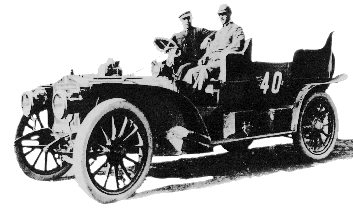 1901
1901
8
January: the Curtino-Castagneri family sell Società Anonima Officine già
Fratelli Diatto the farmland outside Orbassano.
1907
9 July: Paolo Palestrino and
Luigi Simondetti sell the company Società Anonima Officine già Fratelli Diatto 9.6 acres of land (part of the Grangia estate, between
properties owned by Itala) for Itl 192,272.80.
1908
15 February: the Curtino-Castagneri family sell
2.5 acres of land between the Itala premises and Bealera Cassola to the
company. The cost is Itl 5,603.55.
1909
27 October: the ramp from via Moncalieri to the
Umberto I bridge is declared a work of public interest. The Turin City
Authority places a compulsory purchase order on the factory owned by Società
Anonima Officine già Fratelli Diatto, for a value of Itl 64,929.01.
1912
At the age of 70, Giovanni Battista Diatto
retires, leaving his son-in-law and Chairman of Fiat San Giorgio Costruzioni
Navali e Meccaniche, Engineer Dante Ferraris, to run the company. He continued
to live in
1918
23 April: Società Anonima Officine già Fratelli
Diatto, the railway supplies manufacturer, merges with Fiat the first Italian
manifacturer in this field - a deal worth Itl 4,669,491.50 and involving the
sale of the premises in Orbassano and corso Moncalieri, Turin.
1920
25 May: at the age of 83, Giovanni Diatto dies in
1922
20
July: Giovanni Battista Diatto dies in Saint Vincent. He is buried in the family tomb
in Turin.
In 1905, the first generation owners had encouraged
Vittorio and Pietro, Guglielmo’grandsons and sons of Giovanni Battista Diatto,
to become auto manufacturers, thus beginning the history of a famous
manufacturer and racing car team.
CHRONOLOGY OF AUTOMOBILES |
1905
12 April: Società Automobili
Diatto-A. Clément is incorporated by Vittorio and Pietro Diatto-Fonderie Officine
Meccaniche Costruzioni in Ferro and Société des Établissements Adolphe
Clément-Automobiles Bajard with headquarters in Levallois Perret (Paris), for the manufacturer in
Turin of automobiles under Clément license. The Company Chairman is Adolphe Clément, Deputy Chairman and Managing
Director Engineer Vittorio Diatto. Share capital is Itl 1,500,000, of which Itl 450,000
is paid up. The duration of the company is established until 30 September 1935. Company headquarters is in via
Fréjus 21. The factory was built between the streets named after Fréjus, Cesana and Moretta, on land
covering 25,000 square meters. 90 HP of power is installed, supplied by 3 three-phase motors powering about 200
machine tools. Nearly 500 workers are employed in the factory.
1906
At the Turin Exhibition, the company presents the Diatto-Clément Turin 8/10 HP,
10/12 HP, 12/16 HP and 20/24 HP. In September the workshop is enlarged to meet demand for the new models.
22 December: the AGM with Board of Auditors headed by Vittorio Gujot, and with
Engineer Andrea Gonella and attorney Giuliano Capponi Trenca.
1907
New models include the 2-cylinder Diatto-Clément Turin 10/12 HP and 4-cylinder
14/18 HP, 20/25 HP, 25/35 HP. The factory produces around 250 cars a year.
1908
A continuation of the previous year’s models with a new 6-cylinder 24 HP model.
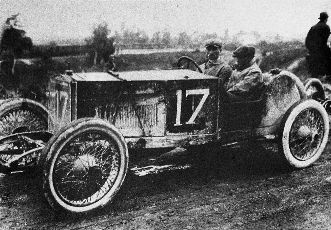 1909
1909
The extraordinary General Meeting on 30 June decides to cut all links with the
French auto manufacturerm and partner. Clément makes over 7,000 shares in the company with a value of Itl
350,000. The shares are destroyed. The share capital goes from Itl 1,500,000 to Itl 1,150,000. The new name of the
company is Fonderie Officine Fréjus which uses exclusively the oval Diatto logo on a red background. Vittorio
Diatto remains as Managing Director. A new model is introduced, the 4-cylinder monoblock 15/20 HP.
1910
A new -cylinder monoblock 12/15 HP is produced, derived from the 15/20 HP
manufactured in 1909. General
dealer for Lazio is Fornari & Muletti, via Aureliana 14-16-18, Rome.
1911
The 16 HP Unique Type is launched.
1912
The 18 HP Uniqye Type goes into production. Dealers in Piedmont: Paschetta and
G. Ambrosini, both based in
1913
The 18 HP Unique Type continues to be produced.
1914
The Unique Type is manufactured under the name 16/20 HP.
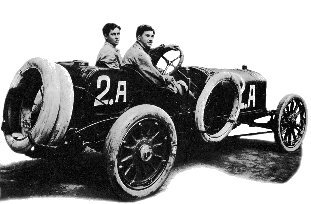 1915
1915
Work on the new premises in via Moretta 55 is terminated. The new facility is a
body shop. 1st April: the premises in via
Scacchi in Chivasso, moving all
the equipemnt and machinery to via Fréjus. Production of the 18/20 HP Unique
Type continues.
1916
17 March: the company negotiates with Weiter and
Waugham the acquisition of a majority shareholding in Société des Moteurs Gnome
et Rhône, which takes the new name of Società Italiana Motori Gnome et Rhône. 8-cylinder
200 HP aircraft are manufactured under the Bugatti license. Production begins
of the new 4vertical cylinder engine models 20/25 HP and 30/40 HP. The company
closes the year with profits of Itl 205,427.
1918
11 February: the company takes the name Società
Anonima Fonderie Officine Fréjus Auto Diatto.
1919
15 February: the share capital of Itl 1,150,000
is increased to Itl 6,000,000, each share with a value of Itl 60. The company
is renamed Società Anonima Automobili Diatto. 5 June: the Fréjus and Diatto
brand names are registered. Carminati becomes Company Chairman. Production
includes the following models: 25 HP 4 DA and 25 HP 4 DC, 10 Type (Gnome) and
30 Type (under license Bugatti).
1920
21 July: company headquarters are moved to Rome -
via XX Settembre 3 - probably in order to negotiate payment of the huge government
war debt to the company of Itl 6,000,000. The government fails to pay and the
company closes out the year with a loss of Itl 5,467,520.23 due to “the
plummeting value of Gnome et Rhône securities”. Production of the 25 HP (4 DA-4
DC) and 10 HP Type continues.
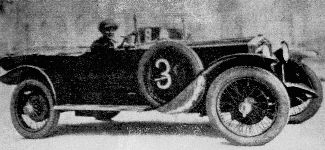 1921
1921
18 April: share capital is reduced to Itl
500,000, and subsequently increased to Itl 10,000,000 in shares of Itl 5, by
merger of Società Italiana Motori Gnome et Rhône and Agenzia Commerciale
Italiana Automobili Diatto, forming a new company: Società Anonima Automobili
Diatto. The merger is ratified on 27 October. On 19 November corporate
headquarters is moved back to Turin - via Venaria 73. The 4-cylinder 4 DS goes
into production.
1922
12-27 April: the Milan Motor Show is used to
launch the 20 Type, the drawings of which had been acquired from Veltro. Giuseppe
Coda, the former Veltro executive and designer, becomes Technical Director.
1923
Production of the 20 Type continues, both for the
general public and for racing. 5 November: the company, now with a share
capital of Itl 1,000,000 goes into liquidation. Members of the Board of
Directors are: Domenico Fracassi, Egidio Zampoli, Alfredo Fortunati and Evasio
Camagna.
1924
20 May: incorporation of Società Anonima
Autocostruzioni Diatto, with a share capital of Itl 3,500,000 in shares of Itl
500, by Società Anonima Automobili Diatto now in liquidation and Panetti, the
Musso brothers, Prandi and Gorrini. Diatto’s share is worth Itl 2,946,500. The
duration of the company is set for 31 December 1949. Production continues to be
based on the 20 Type, now called the 20 A after slight changes.
 1925
1925
The 8-cylinder 2-litre Grand Prix with compressor
makes its debut at the Italian GP in
1926
The company catalogue includes the 20 A, 30, 25 and 35 Type, the latter being
very similar. The factory turns out 6-7 cars a day. The power installed in the
factory is 927 HP, 32 from steam. Around 400 workers are employed. Despite the
favourable conditions, the company once again hits hard times and the Musso
brothers -important partners - drag the company into the
collapse of their textile business and are forced to leave thecompany.
1927
31 March: the AGM approves the reduction of share capital to Itl 1,295,000. 17 January: death of Engineer
Giacinto Prandi, the Managing Director. Two experimental 8-cylinder cars with
compressor are manufactured for the Mille Miglia. The 4-vertical cylinder 26 Type goes into production.
1929
The last cars are produced. 30 June: the balance sheet shows losses of Itl 465,042.85 with further losses
of Itl 336,127.56 carried over.
1931
6 July: Società Anonima Autocostruzioni Diatto applies for creditor protection,
approved on 29 October. The
share capital is reduced to Itl 300,326.50.
1932
The company is acquired by the Production Director Carlino Sasso, from Gnome et
Rhône, who manages to rescue the company.
1934
6 January: the share capital is increased to Itl 1,000,000. The factory
produces spare parts for Diatto models no longer in production and compressors, generators and pneumatic drills.
Corporate headquarters are in via Cernaia 73, always in Turin.
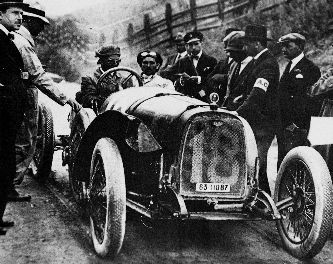
1944
The AGM extends the company’s activities for a further 20 years.
1945
After the Second World War, the company works on the prototypes of trucks and
vans for Galileo SpA, but the company is unable to prosper due to industrial action.
1955
25 July: Società Anonima Autocostruzioni Diatto is taken over by Veglio &
C. SpA with headquarters in via Druento 48, Turin.





